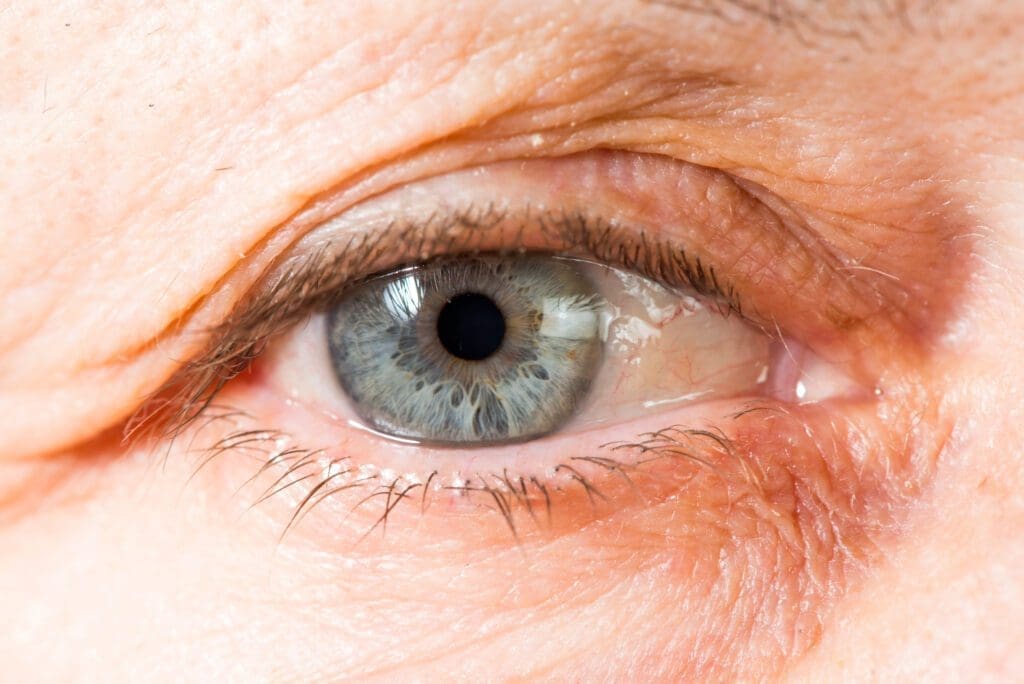Glaucoma is a common eye condition where the optic nerve, which connects the eye to the brain, becomes damaged. It typically occurs due to reduced drainage of fluid from the eye, leading to increased pressure inside the eye. Some people with normal eye pressure can also experience glaucoma. Glaucoma can gradually cause vision loss if not diagnosed and treated early, consequently being know as “the silent thief of sight”.
What Are The Different Types of Glaucoma?
Glaucoma is typically categorised into open- and closed-angle conditions, although there are other types as well.
- Open-Angle: This is the most common type. There is no visible problem to explain the raised pressure in the eye.
- Closed-Angle: The front part of the eye is shallower than average, which makes it harder for fluid to reach the area that it needs to, in order to drain away.
- Normal Tension Glaucoma: This is open-angle glaucoma where the pressure is not raised above normal.
- Ocular Hypertension: This is a raised pressure that has not led to definite signs of glaucoma. If the pressure is at a level where evidence suggests future damage is very likely, the pressure may still need to be treated.
- Acute Glaucoma: Glaucoma usually worsens slowly over the years, but rarely, it can occur rapidly with very high pressure. This is more common in the closed-angle type.
- Secondary Glaucoma: This is glaucoma caused by other eye conditions. Examples include uveitis (inflammation in the eye), diabetes, and previous eye surgery.
FAQ
Who is at risk of Glaucoma?
Glaucoma becomes more likely as you get older, which is why it is important for all people to have regular eye tests, especially over the age of 40.
People with a family history of glaucoma are at higher risk than average of developing the condition. Certain medical conditions, such as diabetes, can increase the risk. It is also more common in some ethnicities than others.
How will I know if I have Glaucoma?
Symptoms depend on the stage of the disease and severity.
Glaucoma is often asymptomatic. Up to 50% of people with the condition are unaware they have it, so regular eye tests are important.
How will it affect me?
Glaucoma is the leading cause of irreversible blindness worldwide. It typically affects the peripheral vision, that is the edges of the vision. Glaucoma usually only affects the central vision when it is more advanced, however in some types, particularly those with normal intra-ocular pressure (IOP), the central vision can be affected more than the peripheral vision.
Glaucoma can cause problems with seeing things on the edges of your vision, and individuals may not be aware that there are areas in which their vision is being affected. If the peripheral vision loss is advanced and affects both eyes, it can affect the ability to meet the DVLA requirements for driving.



Are you experiencing symptoms?
If you’ve started to experience glaucoma symptoms, it’s important to see medical adviser as soon as possible. While glaucoma can be a daunting diagnosis, Vision Care Clinic offers a range of treatments to treat and stabilise vision affected by glaucoma.
Contact Vision Care Clinic
Are you tired of the negative effects of glaucoma drops?
Vision Care Clinic offers leading glaucoma treatments to eliminate the need for glaucoma drops. Contact our friendly team today on 0117 905 7722 to book in for your comprehensive consultation at Bristol’s leading eye clinic.
How is it treated?
Review and Medical Management
Most treatments aim to lower the pressure in the eye.
Sometimes it is not obvious if glaucoma is present and the best option is to monitor for signs of change. Careful monitoring is required over several months. Specialist scans, peripheral vision checks and clinical examinations will be repeated at regular intervals to look for signs of change. 12-month review packages are available with Vision Care Clinic, including up to three reviews, with all relevant scans.
Laser Surgery Treatments
Selective Laser Trabeculoplasty (SLT) is an outpatient procedure performed in clinic to enhance the eyes natural drainage process. It is now the first-line treatment for many types of glaucoma. It is an effective therapy to lower intraocular pressure and is quick and pain-free. This option may sometimes be used in conjunction with prescribed eye drops.
Glaucoma Eye Drops
Eye drops are effective in lowering the eye pressure. Sometimes more than one drop is needed. Some drops are a combination of more than one medication.
Hydrus Microstent
The Hydrus Microstent is a small, implantable device that is designed to improve the drainage of fluid from the eye, reducing intraocular pressure (IOP) and preventing further damage to the optic nerve. The surgery is often performed at the same time as cataract surgery, but can also be implanted separately.
This stent is used for patients with open-angle glaucoma or ocular hypertension. It helps fluid drain from the eye by bypassing the area of greatest resistance, allowing it to drain through the eye’s natural channels more easily. It can lower the pressure in the eye and reduce or eliminate the need for drops.
Preserflo Microshunt
The Preserflo Microshunt is a small, flexible tube that is implanted in the eye to help drain fluid and reduce intraocular pressure (IOP), thereby reducing the risk of further damage to the optic nerve and preserving vision.
The Preserflo provides a pathway for the fluid to exit the eye which is different to the natural pathway, allowing a lower pressure to be achieved. It is used in eyes with mild or moderate glaucoma.
Trabeculectomy
Trabeculectomy is a surgical procedure to reduce intraocular pressure (IOP) and preserve vision. It involves creating a new drainage pathway from the eye in a similar way to the Preserflo, but without an implant being used.
Trabeculectomy is typically recommended when other treatments, such as medications or laser therapies, have failed to adequately control eye pressure. It is typically used in more advanced glaucoma, or when the pressure has never been high, so a particularly low pressure is needed.
Drainage Devices. These larger implants are typically used when other procedures, such as trabeculectomy, have either failed or are unlikely to work.

